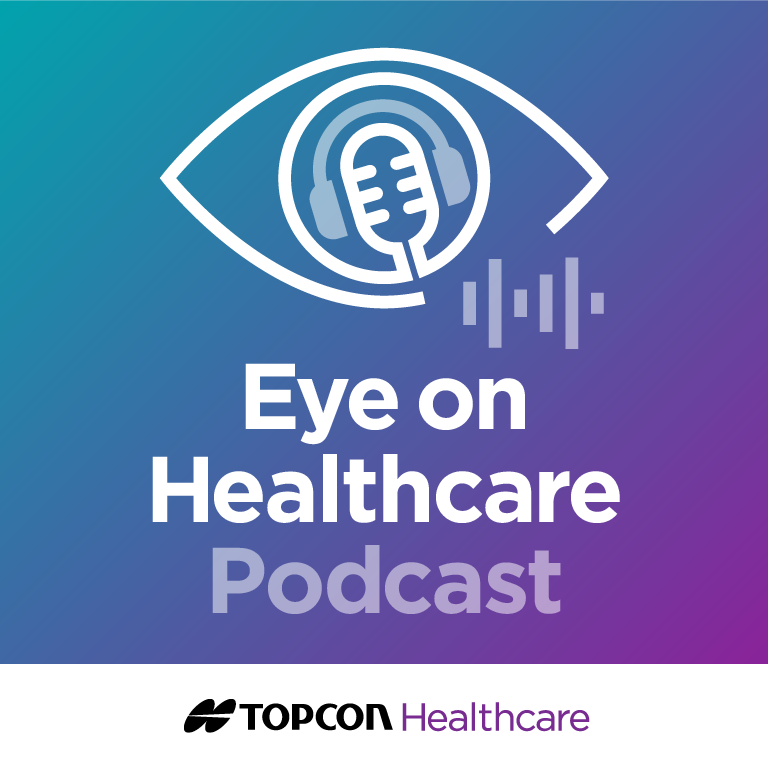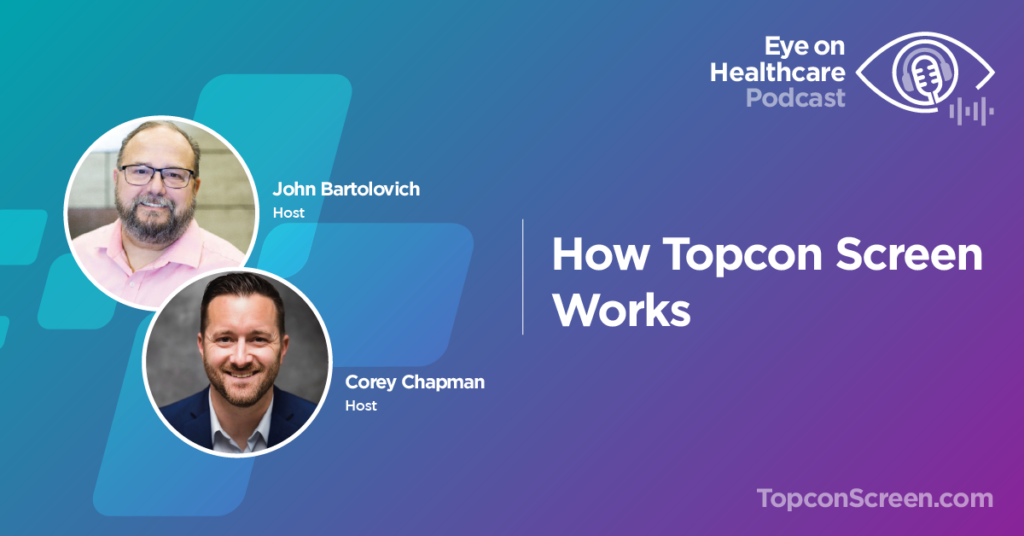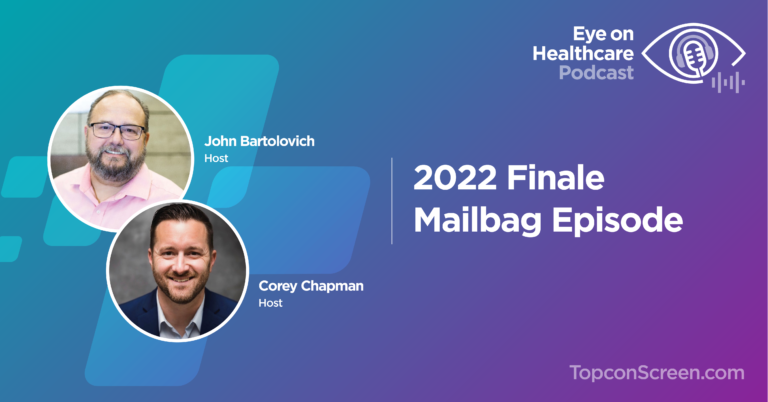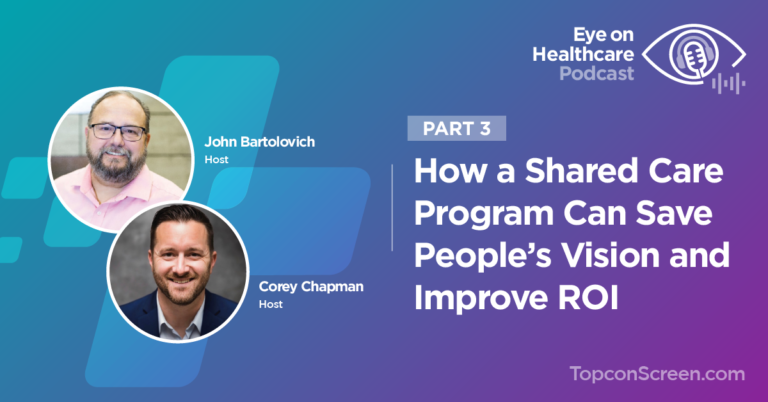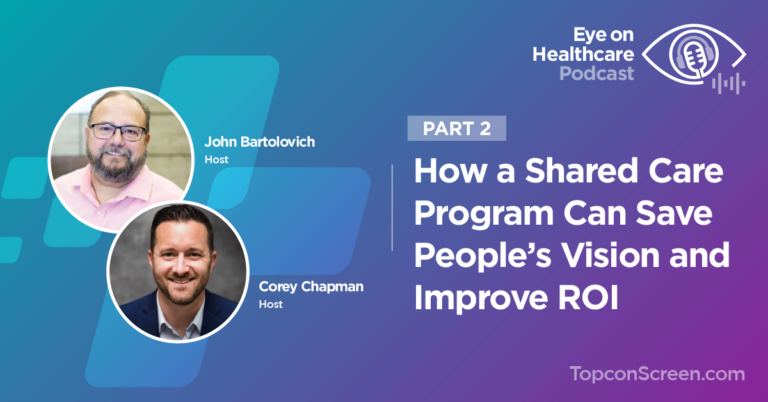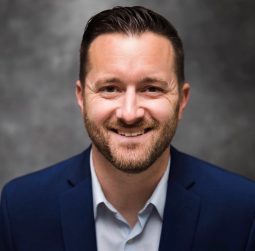Episode Transcript
Corey: Welcome back to another exciting episode of the Eye on Healthcare Podcast. I’m your host. No, no, not this week. I am not your host this week. Let me turn the microphone over. Go ahead, Sir.
John: Yeah, we’re flipping the script, everybody, it’s John Bartolovitch, I’m your host this week and we put Cory Chapman, director of sales for Topcon Screen, in the hot seat. No pressure. So, Corey, welcome.
Corey: It’s great to be here.
John: Yeah. Well, we’re always here. But on a serious note. Last week, Cory, we talked about the cost of treating diabetic retinopathy and the impact that it has on not only the patient, but the healthcare system in general. Aside from being the leading cause of blindness among working adults, utilization cost can easily exceed $20,000 annually. In fact, in my poll last week, 100% of respondents got that answer right. That treatment for DR, diabetic retinopathy, could be in excess of $20,000, so kudos to them. While compliance is improving, Corey, clients tell us that this is one of, if not the hardest quality gap to close. And there is a study out there from the American Diabetic Association Diabetes Association that put the noncompliance rate as high as 60%. So, my question to you, Corey is what does the current primary care practice workflow look like? And could this unintentionally impact the compliance rate?
Corey: Great question John. Better questions that I’ve asked on previous podcasts, so I’m definitely in the hot seat here. You know, John, we see and talk to primary care practices of all sizes, right from the independent office to the FQHC, to the ACR, into the health systems, all the way up. And what we have found is that the current workflow pretty much is the same. Typically speaking what we see is that a diabetic patient is coming into the office, they’re getting their other major exams done including A1C, kidney function test and the foot exam done at point of care. It’s where that compliance drops off a little bit, or in this case a lot around the annual eye exam, because it’s not something that’s typically offered right there in the office. So as a diabetic is coming in, they’re getting their battery of tests done and then they are being asked to go and schedule an appointment with outside specialty clinic and go and have that taken care of. So, what we see in the workflow is either that patient’s coming in, they are then making that appointment, they’re going to their ophthalmologist, the report is coming back and everything is great. That’s probably in that 40 percentile. You’re also seeing that those patients are still getting educated and saying yes, I will go ahead and make that appointment and they walk out the door and you just don’t know if it happens. They return the next time without a report and at that point either the staff has to try to track down the interpretation report or we were right back to where we started. Right? So that power that the office has in being able to take care of the patient right at point of care is so important, and that’s kind of what we see where, again, once they walk out the door, you get your fingers crossed. Like, are they going to have that test done?
John: So, it sounds like Corey that the real bottlenecks is the patient. Not only has the patient gone, but as did we get the report back?
Corey: Yeah. I mean ultimately where we are today is there’s been a heavier focus on these gap closures. Again, we’re talking about compliance here. And so, in order to get that little check mark that that particular patient has had their exam, you have to have that report back. So again, in a typical office that patient has to either bring it on the following visit or have it sent over, faxed or sent over from the ophthalmologist office and some of the bottlenecking around that is kind of leading from that last question. Once that patient leaves the office, there are tons of factors that may stop or slow them down from actually going to see an eye care specialist. We’ve got the social determinants of health. A lot of times we see that there’s a concern of another copay, having to go to another office or man, if I go to an eye care specialist, I might have to have drops, so I may need a ride. I may need somebody else to help or, well, that appointment may take all morning. Am I able to take off 1/2 day of work? and the one that I typically lean on because I just do this myself: the squinty eye test. John, they are telling me I should get my eyes checked but I can see OK. Yeah. Maybe I’ll go maybe I’ll go next time and there’s hundreds of others that are out there, but those seem to be some of the major concerns when we talk about this. And then the other part to it, John, is even if those patients do follow through and they are able to go, that report doesn’t come back. Now you’re asking your administrative staff in the office to chart-chase, to spend time on a Friday afternoon calling around all the local ophthalmologist saying, what date and time did you see, Mr. Smith? can you fax it over? And that’s time that’s taken away from other things at the office should be doing, including patient care
John: Any other reasons you can think of Corey that a patient not getting this exam done?
Corey: well again we’ve just we’ve had conversations on previous podcasts. Please go back and listen and subscribe. But social determinants of health, I mean, there’s so many different reasons, John, let me ask you, you’ve been around this industry as well. I’m flipping the script back. You knew, I would twist it a little bit. What do you see typically with this being such a challenge?
John: Yu hit them all on the head. The one that we probably miss a lot and don’t think of a lot is that, that patient may be somebody else’s caregiver. Yeah, they can’t afford to take that time off because they may be caring for their children or they may be caring for a sick child and that impacts their ability to get to other appointments. Having to take off work might cost them their job, so that that’s probably the only other thing that I hear a lot in my conversations.
Corey: Yeah, to add onto that John, you know we run numbers a lot here, right? We were talking about 60% compliance and all these different numbers and how many diabetics come to see this office and so on so forth. But the reality is every one of those numbers is a person, and every one of those people have a story, right? So, it’s not as black and white as just saying they’re not compliant. There are reasons behind it, like you just kind of mentioned so more and more health systems, more and more population health management folks understand that story. And are trying to bridge that gap to make screening, not just diabetic retinopathy screening, but screenings in general being brought into point of care. Right? Because we know that. We talk about those other diabetic numbers. You know, A1Cs, kidney function, for example, we see typically nationally around like 85 to 90% compliance. So that’s telling us that these patients living with diabetes are going to see their primary care doctor. It’s when you’re asking another, you know an additional visit somewhere else or another appointment, you know, going maybe across town for something that they’re not even really sure why they’re getting it done. You know, you’ve already got that patient to come in. They are sacrificing that time to stay in better health. I’m here, you know, Doctor Smith, Dr Jones, take care of me. Here. And that’s why you know, we have such a strong push to provide these services at point of care and get everything done right there in your primary care office.
John: Corey, that is great information, but I just want to tell our viewers, Corey is not off the hot seat yet. Next week we’re going to do the same format where I’ll be asking the questions and were going to discuss how implementing the Topcon Screen solution for the diabetic eye exam can help practices close that care gap.

